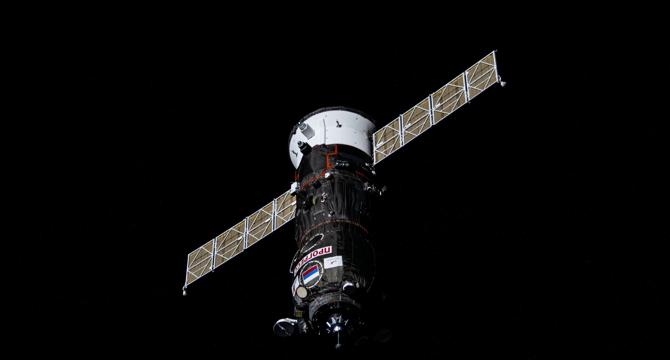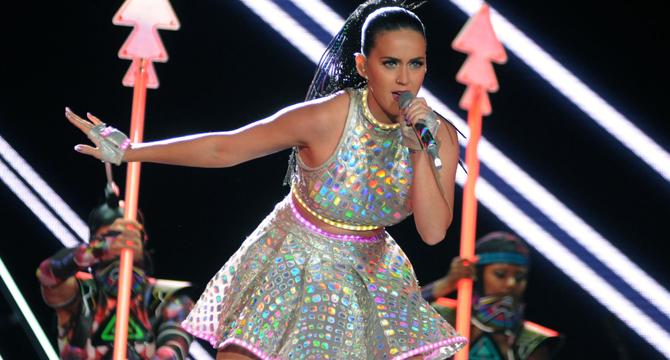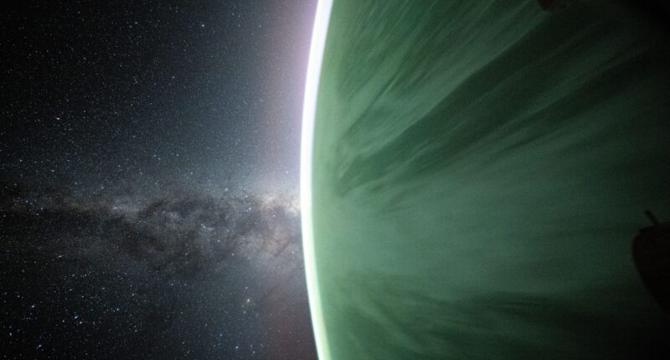Space News
Medium
168

Image Credit: Medium
The Year Of The Yo-Yo Asteroid
- 2025 has been a year of uncertainty regarding the yo-yo asteroid Chunky Deathpebble.
- Initially, there were concerns about an impact, but now its chances of hitting Earth are virtually zero.
- However, the size of the asteroid remains unknown, which could have significant implications if it were to collide with Earth.
- The continuous uncertainty surrounding Chunky Deathpebble has been a cause for concern.
Read Full Article
10 Likes
Universe Today
268

Image Credit: Universe Today
The Solar System is Taking a Fascinating Journey Through the Milky Way
- Our Solar System moves at about 200 kilometers per second through the Milky Way galaxy, passing through different regions over time.
- Research indicates that 14 million years ago, the Solar System passed through the Orion star-forming complex within the Radcliffe Wave structure.
- The Radcliffe Wave is a massive structure discovered in 2020, housing star-forming regions like Orion, Perseus, and Taurus molecular clouds.
- Passing through dense regions like the Radcliffe Wave compressed the Sun's heliosphere, allowing more interstellar dust to enter the Solar System.
- This influx of dust potentially impacted Earth's climate and geological records, leading to events like the Middle Miocene Disruption (MMD).
- Research published in Astronomy and Astrophysics highlights the Solar System's interactions with the Radcliffe Wave and its potential effects on Earth.
- Tracing the Solar System's movement through the Radcliffe Wave using Gaia mission data suggests a significant intersection around 14.8 to 12.4 million years ago.
- The proximity of this period to the MMD indicates a potential link between the Solar System's passage through dense gas regions and Earth's climate transitions.
- Interstellar dust accumulation from such passages may have contributed to global cooling and anomalies in Earth's geological records.
- The research provides insight into large-scale cosmic events influencing Earth's climate, emphasizing the need for further exploration in this area.
Read Full Article
16 Likes
Medium
433

Image Credit: Medium
YR4 — We’ll Dodge This Space Bullet
- The asteroid 2024 YR4 initially had a 1-in-32 chance of impacting Earth, but the odds have dramatically decreased to 1-in-59,000.
- Recent data indicates that asteroid 2024 YR4 will perform a near-Earth flyby between Earth and the Moon in 2032, posing little threat.
- There is a new, albeit small, possibility of asteroid 2024 YR4 colliding with the Moon, with chances initially around 0.3% and increasing to over 1%.
- An impact with the Moon could create a 2-kilometer wide crater and provide scientists with a unique opportunity for lunar study.
- The fluctuating risk assessments of asteroid impacts are common in the asteroid risk assessment game, with initial high probabilities often diminishing with more data.
- Efforts to monitor near-Earth asteroids like 2024 YR4 involve analyzing various factors such as albedo and solar radiation pressure to predict trajectories.
- Ongoing observations have significantly reduced the Earth impact risk of asteroid 2024 YR4 to a minimal chance, highlighting the importance of continuous monitoring.
- The potential Moon impact risk of asteroid 2024 YR4, though still low, offers a scientific opportunity for studying lunar impacts and geology.
- Space agencies like NASA and ESA constantly refine their asteroid tracking systems to assess and mitigate potential threats posed by celestial objects.
- The asteroid 2024 YR4 saga underscores the importance of planetary defense and the need for ongoing vigilance in safeguarding Earth from space hazards.
Read Full Article
26 Likes
Brighter Side of News
337

Image Credit: Brighter Side of News
Engineers create first lightweight flat telescope lens that can capture color
- Engineers have developed a lightweight flat lens for telescopes, reducing weight and improving image quality.
- Traditionally, telescopes have used heavy and bulky curved lenses and mirrors.
- The new flat lens overcomes the limitations of traditional optical elements by maintaining accurate color representation and sharp resolution.
- Researchers at the University of Utah created a diffractive lens capable of focusing light across a broad range of wavelengths.
- The flat lens consists of microscopically small concentric rings that minimize chromatic aberration and bring all wavelengths of light into focus.
- The lens was successful in capturing images of the sun and moon with fine details such as sunspots and lunar craters.
- This breakthrough could lead to simpler and more affordable airborne and space-based imaging systems.
- Industries like aerospace, medical diagnostics, and environmental monitoring could benefit from lightweight, high-performance lenses.
- The team's work represents a significant step towards the future of lightweight optical systems in various applications.
- The combination of computational techniques and precise manufacturing has enabled the creation of high-quality optical systems with reduced weight.
Read Full Article
20 Likes
Discover more
Nasa
264

Image Credit: Nasa
NASA Installs Heat Shield on First Private Spacecraft Bound for Venus
- NASA has installed a heat shield on the first private spacecraft bound for Venus.
- The spacecraft, led by Rocket Lab and their partners at the Massachusetts Institute of Technology, will study the clouds of Venus for signs of life.
- NASA's role is to provide expertise in thermal protection for small spacecraft and has invented the Heatshield for Extreme Entry Environment Technology (HEEET).
- The HEEET is a woven heat shield designed to protect the spacecraft from temperatures up to 4,500 degrees Fahrenheit.
Read Full Article
15 Likes
Livescience
314

Image Credit: Livescience
Most powerful cosmic rays in the universe start shockingly close to Earth, paper claims
- The most powerful cosmic rays may come from heavy dark matter particles annihilating themselves near Earth.
- Cosmic rays are high-energy particles largely made of protons or nuclei of heavy elements.
- The origins of most cosmic rays are known, but the origins of the most powerful ones are still not fully understood.
- A recent paper proposes that the most powerful cosmic rays originate from an exotic form of dark matter called scalarons.
Read Full Article
18 Likes
The Verge
437

Image Credit: The Verge
Starlink poised to take over $2.4 billion contract to overhaul air traffic control communication
- The Federal Aviation Administration (FAA) is considering canceling a $2.4 billion contract to overhaul the communication system for the nation’s air traffic control and award it to Starlink, a subsidiary of SpaceX, instead of Verizon.
- Elon Musk has been criticizing the Verizon system and claiming that it puts air travelers at risk, while offering Starlink terminals for air traffic control connectivity at no cost to the taxpayer.
- Musk's SpaceX team has been working within the FAA to help modernize the agency's technology systems, and several SpaceX employees now have FAA email addresses.
- This potential contract change could lead to accusations of favoritism and conflicts of interest, as Musk continues to advocate for government efficiency and cost-cutting measures.
Read Full Article
26 Likes
Nasa
155

Image Credit: Nasa
Crew Works Eye Checks, Stomach Scans Before Cargo Mission Launches Today
- Eye checks and stomach scans dominated the research schedule aboard the International Space Station on Thursday ensuring astronauts stay healthy in weightlessness.
- A variety of eye exams help researchers track and understand the space-caused optical symptoms and develop treatments to keep crews healthy.
- NASA astronauts undergo eye exams using ultrasound and medical imaging devices to examine the cornea, lens, and optic nerve.
- In addition, astronauts participate in ultrasound scans of their stomachs to study how weightlessness impacts the digestion system.
Read Full Article
9 Likes
TechCrunch
9

Image Credit: TechCrunch
Katy Perry, Gayle King, and Lauren Sánchez headed to space on Blue Origin mission
- Jeff Bezos’ rocket company, Blue Origin, has announced the crew for its next space mission.
- The crew includes popstar Katy Perry, Gayle King, two scientists Aisha Bowe and Amanda Nguyen, Jeff Bezos’ fiancée Lauren Sánchez, and film producer Kerianne Flynn.
- This marks the first all-female space crew since Soviet astronaut Valentina Tereshkova's mission in 1963.
- The journey on Blue Origin's New Shepard rocket is expected to last around 10 to 12 minutes.
Read Full Article
Like
Guardian
191
Image Credit: Guardian
Katy Perry, Lauren Sánchez, Gayle King: all-female crew to helm next space flight on Bezos’s Blue Origin rocket
- An all-female crew will helm the next flight into space of a Blue Origin rocket.
- The crew includes Katy Perry, Gayle King, Amanda Nguyen, Kerianne Flynn, Aisha Bowe, and Lauren Sánchez.
- This will be the first human-crewed spaceflight leaving Earth without any men since 1963.
- Blue Origin has flown 52 people above the internationally recognized boundary of space.
Read Full Article
11 Likes
Medium
136

Image Credit: Medium
The Genius Who Reinvented the Obvious
- Gary, an eccentric inventor, believes in perfecting what already exists rather than creating new things.
- His latest inventions include an ergonomically designed water bottle with an airtight cap and a paper fan called EcoBlower Pro.
- Despite the skepticism of his neighbor Bob, Gary unveils his most ambitious creation: an Automated Vertical Transport System with an extra button that serves no purpose.
- While Bob finds Gary's inventions laughable, Gary remains undeterred, convinced that he is creating the future.
Read Full Article
8 Likes
Medium
351

Image Credit: Medium
Can We Harness Lightning Energy?
- A standard lightning strike releases about 5 billion joules of energy.
- Every day, 8,640,742 lightning strikes hit the Earth, equivalent to the energy released by burning 1,252,800,000 liters of oil.
- Lightning is a relatively rare phenomenon and is not evenly distributed across the planet.
- In areas with the highest lightning frequency, there are about 70 strikes per square kilometer yearly, or one strike every 5.21 days.
Read Full Article
21 Likes
Guardian
191
Image Credit: Guardian
Space station’s lack of dirt may damage astronauts’ health, says study
- Scientists have found that the International Space Station's extreme cleanliness may negatively impact astronaut health.
- The lack of environmental microbes in the station could be contributing to immune-related health issues experienced by astronauts.
- Researchers suggest intentionally introducing diverse microbial communities into space stations to improve astronaut health without compromising hygiene.
- While caution is advised, the study highlights the importance of a natural balance of microbes for immune system functioning.
Read Full Article
11 Likes
Popsci
168

Image Credit: Popsci
Should the ISS be dirtier? Cleanliness could be making astronauts sick.
- A new study suggests that the microbiome of the International Space Station (ISS) lacks diversity and contains an excess of antimicrobial resistance genes, which may contribute to health issues for astronauts.
- The ISS environment is described as having an extreme absence of molecules and microbes, with different modules showing varying microbial and molecular profiles based on their functions.
- Analysis of surface swabs from the ISS revealed low microbial diversity compared to Earth, with the majority of microbes being human-associated species.
- The space station's chemical profile contains industrial chemicals like PFAS and phthalates, potentially posing health risks for astronauts.
- The presence of antimicrobial resistance genes in many samples could lead to serious illness if acquired by human pathogens.
- Introducing soil or probiotic cleaning methods could potentially improve the microbial composition of the ISS and benefit astronaut health.
- The study highlights the need for further research to better understand the microbial and chemical conditions in space and their impact on astronaut immunity and health.
- Adding dirt or beneficial microbes to the ISS environment may help create a healthier space for astronauts, potentially reducing the risks of antimicrobial resistance and health issues.
- Frequent cleaning on the ISS could be contributing to the growth of diverse microbial populations, some of which may be evolving antimicrobial resistance.
- The study suggests that a more diverse microbial environment and introducing soil or probiotics to the ISS could have positive impacts on astronaut health and immune systems.
Read Full Article
10 Likes
Earthsky
173

Image Credit: Earthsky
See Earth and the Milky Way in this stunning shot
- Astronaut Don Pettit captured a stunning view of Earth and the Milky Way from the International Space Station on January 29, 2025.
- The image shows Earth on the right and the Milky Way galaxy in the distance.
- Pettit used low-light and long-duration settings to bring out the stars and gas clouds of the Milky Way, with the glow of the rising sun illuminating Earth's limb.
- The image was taken 265 miles above the Pacific Ocean, off the coast of Chile.
Read Full Article
10 Likes
For uninterrupted reading, download the app